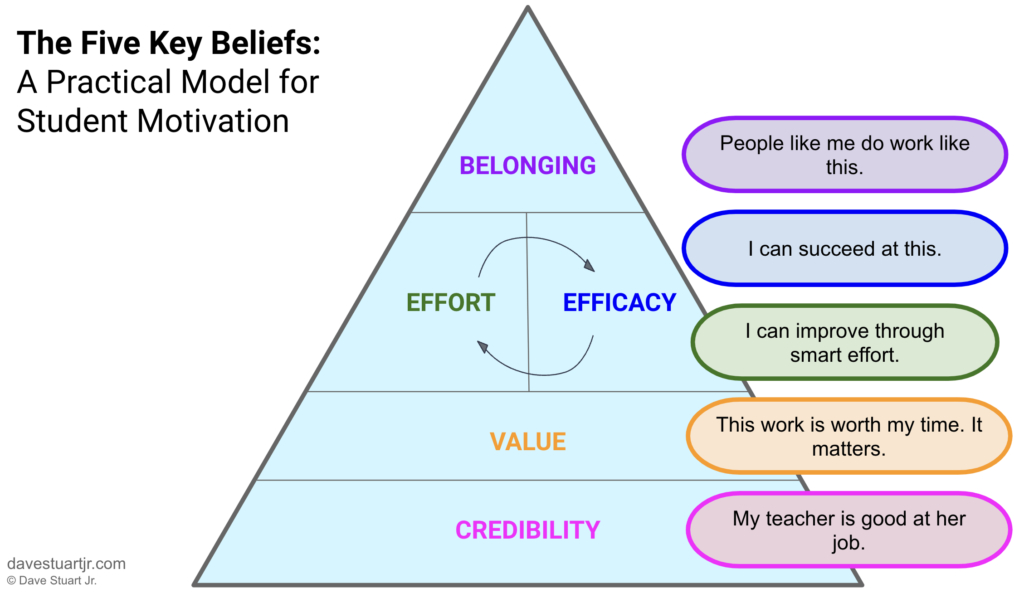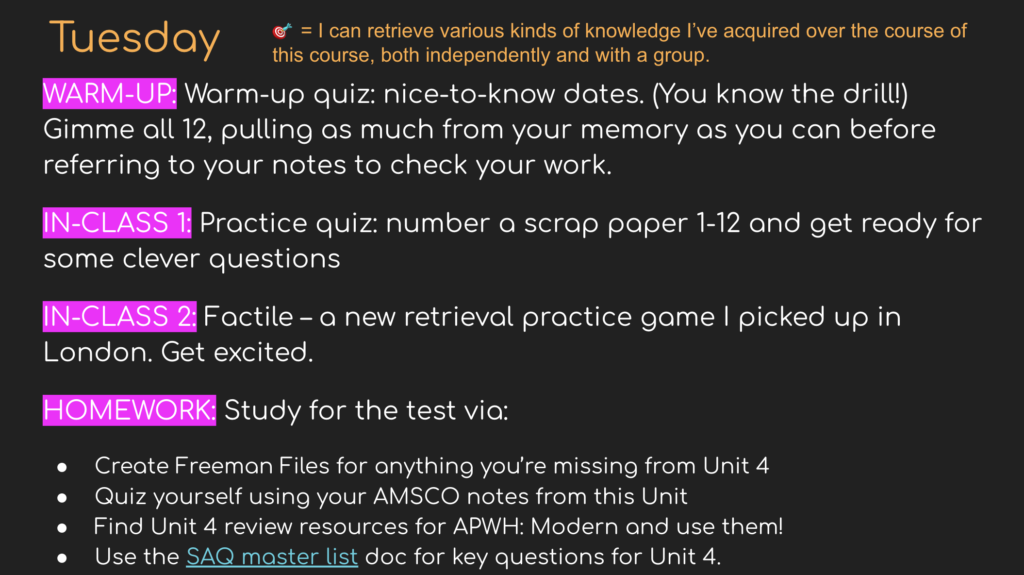A bit ago in class I used a trick that I learned from one of our global colleagues at TASIS American International School in England just outside of London. (Below is a photo that some of us took together when my wife and I visited their school recently.)

(The person I need to credit specifically for today's post is our colleague Ms. Jessica Lee, who is pictured on the left.)
Jessica led a session on teaching students how to learn. This is a lovely topic for PD. In my experience, we teachers can be deleteriously presumptuous about the degree to which our students understand how best to learn. When students don't know how to learn, it can often be quite harmful to the level of effort they put forth in class. And we can hardly blame them for this — few people want to persist in effort that they are not confident in.
And so it falls to us as educators to make sure that we're teaching, modeling, and reinforcing the wise learning behaviors that comprise wise and strategic effort. Teaching wise, strategic effort in this way is the best method I'm aware of for cultivating the Effort belief.

In the case of Jessica's session, she advocated for something simple and powerful: teach and lead students in the kinds of activities that are built on retrieval practice and interleaved practice. Some years ago, our colleague Erica Beaton published an article on this topic — you can access that here. But the gist is this:
- Retrieval practice: testing yourself on knowledge — that is, literally requiring yourself to pull information from memory and use it — is the best way to both know that you know it and ensure that you know.
- Interleaved practice: mixing practice up to include skills and knowledge acquired both recently and further in the past.
And, Jessica pointed out, when you conduct activities like this in your classroom, take thirty seconds to explain to students why this kind of activity is worth their time. That's a critical piece.
Here's what we did in my class to apply Jessica's teaching
When I returned home from London, my students and I were on the eve of a unit assessment. It was a perfect time to craft a lesson in which my students could practice retrieving various kinds of knowledge in response to varying degrees of question difficulty.
Here was the slide for the lesson:

It's basically an interleaved retrieval practice fiesta. We did:
- Nice-to-know dates: students pull a list of twelve dates from 1200-2001 we've been working on from memory as best they can (full treatment of date memorization in my classroom here); just be mindful with memorization like this that the quality with which the information is stored is the quality with which it tends to get retrieved — meaning, you've got to make sure information is as meaningful as it can be for students.
- Quiz questions: I read aloud and display twelve trivia style questions that I create by looking through the unit's vocabulary, ranging from simple to complex.
- Factile: A Jeopardy-style game that took a bit of prep for me — I had to come up with the thirty questions and the six categories — but that I expect to use perhaps once per unit, taking student recommendations each time about how to make the experience maximally beneficial for retrieval practice and fun.
At the end of the lesson, I asked students to respond to a simple prompt with partners: what’s something we could do to make review better next time?
Then we shared out and I took some notes so that the next review day we do would be even more effective than this one was.
The point: teach students how to learn! And have a spot of fun while you do it, sometimes.
Best,
DSJR
P.S. – Mad thanks to Jessica Lee and the rest of our colleagues there at TASIS England for their great work and the delightful time my wife and I were able to have visiting them.
Leave a Reply